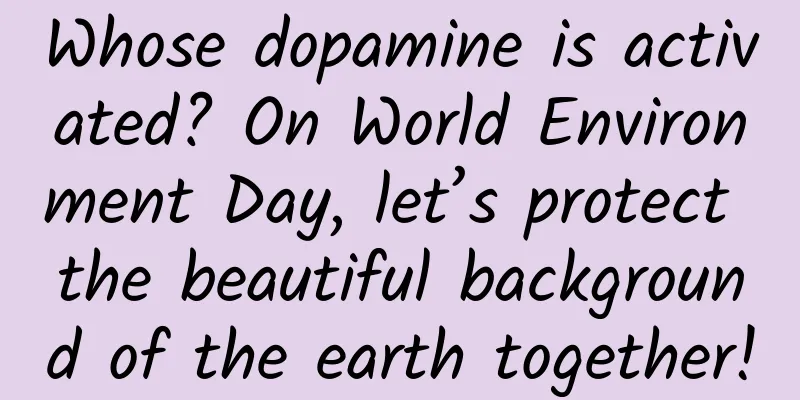The TV series "Alley People" has gone viral, but do you know that there is really a "Zhuang Tunan" in reality?

|
With the popularity of the TV series "Alley People", many viewers' thoughts were drawn back to the passionate and ambitious 1980s and 1990s. Among them, the plot of students from the Department of Architecture of Tongji University working together to draw a picture to persuade the government planning department to "save Yunyao from the knife" made everyone excited, and their emotions also fluctuated with the fate of "Yunyao Ancient City". In the play, everyone brainstorms to protect the ancient city of Yunyao Although the "Yunyao Ancient City" in the play is a fictional location based on the ancient buildings of Fencheng in Linfen City, Shanxi Province, in reality, the story of "Save Pingyao under the Knife" has really been staged on the hot land of the Loess Plateau. Moreover, life is often more vivid than works of art, and the real "Zhuang Tunan" has done much more than just drawing. This "protagonist" who lives around you and me is called Li Jinsheng. Li Jinsheng Do not indulge in fantasies, and do not pursue empty reputations. As the former first-level inspector of the Shanxi Provincial Department of Housing and Urban-Rural Development and a professor-level senior planner, Li Jinsheng has been committed to the protection of ancient cities and the application for world cultural heritage for many years. The "Pingyao Ancient City Protection Plan" he presided over and completed won the second prize of the Ministry of Construction and the first prize of Shanxi Province. It made an important contribution to the successful application of the ancient city for heritage and filled the gap in my country's historical and cultural cities in the world cultural heritage. In the more than 40 years of his career, Li Jinsheng has always conducted research on urban and rural planning and urban infrastructure construction. With his profound professional knowledge and rich practical experience, he has reshaped the "meridians" and "pulses" of many cities in my country. Measuring the Land with Your Feet Born in a courtyard house in Pingyao, Li Jinsheng had never left this ancient city before going to college. Every blade of grass, every brick and every tile here were engraved in his heart. Therefore, after completing his studies in 1983, Li Jinsheng immediately returned to his beloved hometown and joined the Shanxi Provincial Urban Planning and Design Institute to start work. At that time, the whole country was in a state of enthusiasm for urban construction. As a result, many ancient buildings were demolished one after another, and the ancient city of Pingyao was in danger. As shown in the film and television drama, Professor Ruan Yisan of Tongji University was reluctant to see the cultural treasures destroyed, and personally went to Shanxi to conduct investigations. He made many efforts and raised his arms, which not only awakened some people's awareness of protecting Chinese treasures, but also fundamentally prevented this constructive destruction. Later, this incident was praised as "saving the city under the knife." Li Jinsheng was also involved in this. In 1986, Pingyao Ancient City was officially listed as the second batch of national historical and cultural cities. Immediately afterwards, the Shanxi Provincial Urban Planning and Design Institute received the task of compiling the "Pingyao Historical and Cultural City Protection Plan" (hereinafter referred to as the "Protection Plan") from the Shanxi Provincial Construction Department, and Li Jinsheng took on the responsibility of presiding over the work. Although he had been responsible for the planning of many scenic spots in Wutai Mountain in the "Wutai Mountain Scenic Area Planning" and had practical experience in the protection of natural and cultural heritage, he was inevitably excited when it came to "take charge" of the transformation of his hometown. "At that time, there was no unified standard and method for compiling famous city protection plans in our country, so we could only 'cross the river by feeling the stones'. Although I grew up in the ancient city of Pingyao, when I really tried to change its destiny, I deeply felt the emotional heaviness and technical complexity." Li Jinsheng sighed, recalling his work experience back then. 1987 was the most important year for the preparation of the "Protection Plan". He and his project team spent half a year conducting field surveys in Pingyao Ancient City, and conducted detailed architectural surveys and social surveys on every courtyard, every building, every household, and every enterprise in the ancient city. They knew the construction quality, cultural value, property rights, resident population, occupations, production and management, and supporting facilities of every house, and summarized and refined countless drawings. A hand-drawn drawing that still hangs in Li Jinsheng's office is the best example. Li Jinsheng and his own hand-drawn drawings "In our time, we drew pictures by hand. This is a 1:3000 typical residential protection plan map. At that time, I drew many maps by hand, from color wall maps to black and white atlases. However, the local management department has moved many times over the years, and this is the only one left in my hands." Whenever he touches this memory, Li Jinsheng sighs with regret. What makes Li Jinsheng feel deeply is not only what is drawn in the map, but also the "human feelings" outside the map. While investigating the ancient city, Li Jinsheng witnessed the crowded conditions of more than 50,000 people living in an area of 2.25 square kilometers: some families could only squeeze on one kang, and the comfortable traditional courtyards evolved into large courtyards; the main party and government agencies and management departments, commercial services, medical and health institutions, primary and secondary schools, and some large-scale industrial enterprises were all crowded together, with no planning order at all. All these made Li Jinsheng hold the pen in his hand tighter. Finally, in 1989, the "Pingyao Historical and Cultural City Protection Plan" which took three years to complete was finally completed. It is worth mentioning that this "Protection Plan" is one of the earliest completed famous city protection plans in China and an important milestone in the protection of historical and cultural cities in my country. It systematically studies the historical, scientific, artistic, cultural and social values of Pingyao Ancient City, and proposes planning countermeasures for zoning, grading and classification protection and a comprehensive and complete protection concept, which provides technical and institutional guarantees for the protection of the ancient city and also provides strong support for Pingyao Ancient City's application for World Cultural Heritage. On December 3, 1997, the Pingyao Ancient City in Shanxi (including Shuanglin Temple and Zhenguo Temple outside the ancient city) and the Lijiang Ancient City in Yunnan were simultaneously included in the World Cultural Heritage List, filling the gap in the overall inclusion of my country's historical ancient cities in the World Cultural Heritage List. Since then, this ancient city that seemed to be frozen in history has begun to radiate new vitality and vigor, becoming a "new city" that combines human life with historical memory. Protecting people's livelihood with heart "Urban planning is not unfamiliar or distant. On the contrary, it is closely related to our lives. In many people's minds, urban planning is just a blueprint, but this is not the case. Urban planning involves politics, economy, culture and other aspects. It is one of the important public policies for the government to regulate urban space resources, guide urban and rural development and construction, maintain social equity, and protect public safety and public interests. Therefore, a good plan is crucial to the development of society." Li Jinsheng often said, "Therefore, the underlying logic of our work is to start from the perspective of making the people happy." Over the years, Li Jinsheng has been focusing on turning this theory into practical action. In 2008, the whole country was in mourning over the Wenchuan earthquake. Li Jinsheng chose to rush to the scene as soon as he received the notice to assist Sichuan, helping with the construction of temporary transitional housing in Dujiangyan City and post-disaster reconstruction in Maoxian County. In 50 days, he and his team completed the construction of 37,250 transitional housing units in 93 areas, allowing the affected people to move into the new houses in a timely manner while also actively guiding government departments to establish the concept of protecting rural culture. Today, the farmhouses in Dujiangyan and Maoxian, which are full of regional and rural flavor, are attracting tourists from all over the world. From the ruins in the epicenter to the reconstruction of homes, from dilapidated houses after the disaster to characteristic farmhouses, as the executive deputy commander of the Wenchuan earthquake transitional resettlement housing construction, Li Jinsheng is filled with emotion. In addition, in terms of hometown construction, he later presided over various national plans, including the "one core, one circle and three groups" urban cluster planning of Shanxi Province, the Taiyuan metropolitan area planning, the urban planning of various cities, the natural scenic area and cultural heritage planning, the Shanxi higher education new campus planning and the Fenhe Park planning, involving more than 200 scientific research projects. He presided over the writing and publication of ten sets of "Surveying and Mapping Collection of Historical Buildings in Ancient Villages and Towns in Shanxi" and "China Planning Implementation Theory and Typical Case Series", leaving valuable wealth for China's urban and rural planning field. Li Jinsheng is working at his desk Li Jinsheng has spent more than 40 years pursuing his dream of his country and his homeland, choosing a city, devoting his life to one thing. Today, the city, beating with the rhythm of prosperity, is the perfect proof of his diligent work; and tomorrow, leaving the vitality and charm of the ancient city in the vivid image of modern development will still be the most important thing on his mind. |
<<: It is hard to imagine what kind of mental state these mechanical animals were made in...
Recommend
A guide to game industry splash screen design based on 1000+ case studies
Based on the analysis of 1000+ splash screen mate...
How much does it cost to join a restaurant kitchen app in Jixi?
For entrepreneurs, although mini program developm...
Goddess crash course: How to build your attractiveness? 12 series of lessons to teach you step by step
A beautiful appearance but a boring soul can only...
Bidding hosting: Summary of SEM bidding account issues
We often hear people complain that SEM promotion ...
Shandong Provincial National Defense Education Network Registration, Shandong Provincial National Defense Education Office!
Do you want to register an association with this ...
Full screen is popular, but are you still confused about this concept like me?
In the recent mobile phone circle, the word "...
China Passenger Car Association & CAM: Passenger car market product competitiveness index is 92.3 in March 2023
The Automobile Market Research Branch of the Chin...
A loud snore is no friend! Is a ventilator useful to get rid of snoring?
I saw some netizens saying that the elderly in th...
Global warming: A detailed explanation of the 2021 Physics Nobel Prize for complex stochastic systems
According to the official website of the Nobel Pr...
Why are vaccines given in the arm instead of the buttocks? How many "vaccine marks" do you have on your arm?
Expert in this article: Li Xue, Peking Union Medi...
Hangzhou’s new talent policy in 2020: a maximum of 8 million yuan in housing purchase subsidies and a one-time living allowance of 50,000 yuan!
We learned from the Talent Office of the Hangzhou...
Understand GUCCI’s Metaverse Marketing in one article!
With the popularity of the Metaverse, related con...
On a clear night of Mid-Autumn Festival, we meet the stars and the moon
The Mid-Autumn Festival is one of the four major ...
If you have these 5 daily necessities at home, it is recommended to throw them away immediately
One minute with the doctor, the postures are cons...
377 kilometers, 253 bridges, 159 tunnels... Why is this high-speed railway so difficult?
At 10:18 on December 22, 2010, the No. 4806 train...









